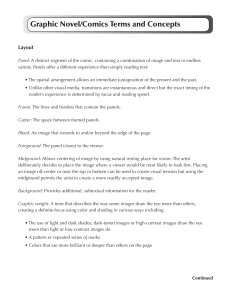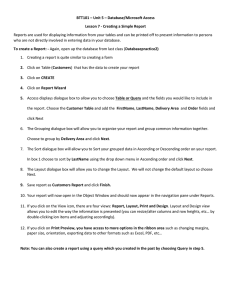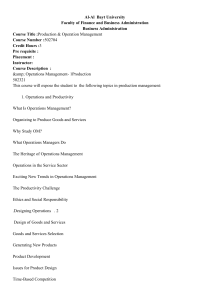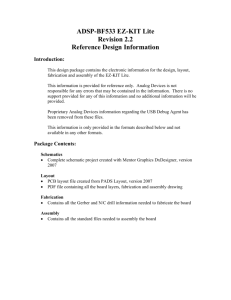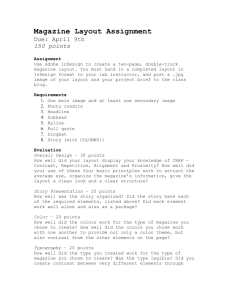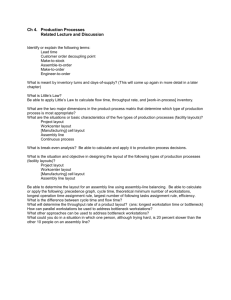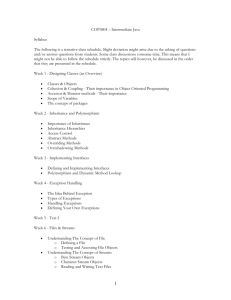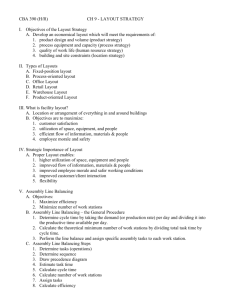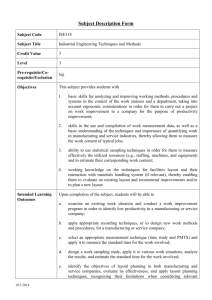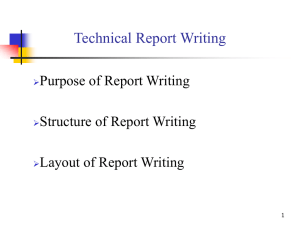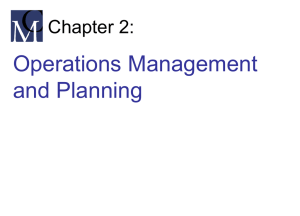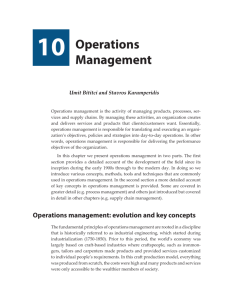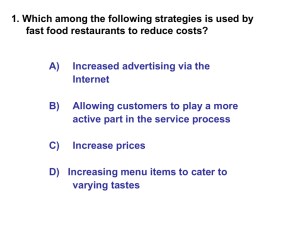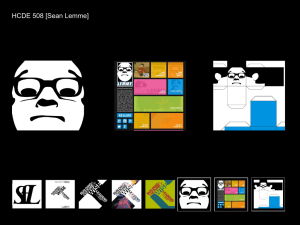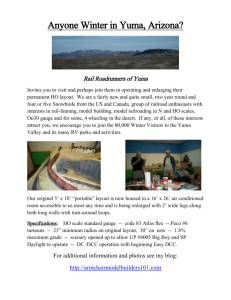Graphic Novel Terms and Concepts
advertisement
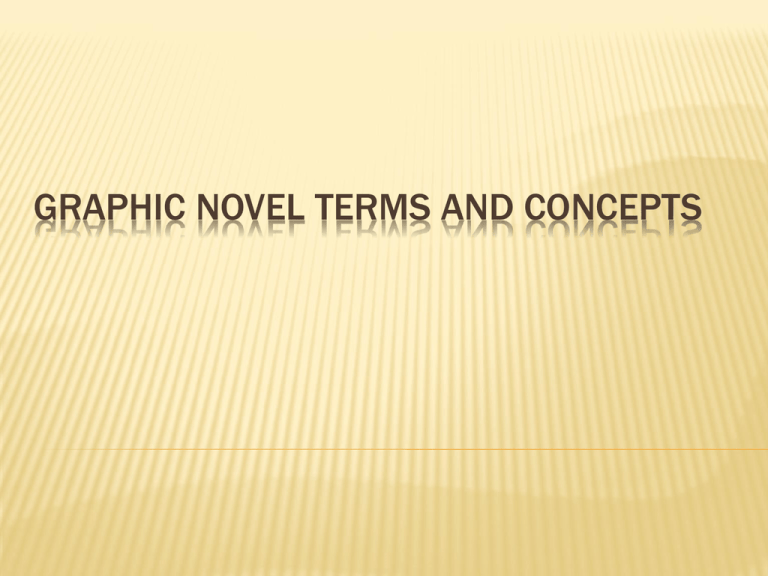
GRAPHIC NOVEL TERMS AND CONCEPTS LAYOUT Panel: a distinct segment containing a combination of image and text in endless variety. Panels offer a different experience then simply reading the text: The spatial arrangement allows an immediate juxtaposition of the present and the past. Transitions are instantaneous and direct, but the timing is determined by the reader’s speaker and focus. LAYOUT Frame: the lines and borders that contain the panels Gutter: the space between framed panels Bleed: an image that extends to/beyond the edge of the page LAYOUT Foreground: the parts closest to the viewer Midground: The artists places an image centered or off centered to create visual tension . Background: provides additional, subtextual information for the reader LAYOUT Graphic Weight: a term to describe the way some images draw the eye more than others, creating a definite focus using color and shading. Artists use light and dark colors or shades to offer contrast or highlight certain sections of an image. A patter or repeated marks are often used, sometimes symbolically Colors can also be more vivid or deeper than others for effect FIGURES Faces: Some face depict an actual person, others are iconic or symbolic. They can be dramatic when placed against a detailed backdrop They can be drawn without much expression or detail, which invites the audience to figure out what the character is thinking. This is called an “open blank” FIGURES Hands and Feet: the position of hands and feet can be used to express what is happening in the story. Hands with palms out might suggest surprise. Hands over the mouth might depict fear, shame, shyness, etc. Feet that appear in motion might create a sense of panic, urgency, etc. TEXT Captions: these boxes contain a variety of text elements, such as scene-setting, description, etc.? Special-Effects lettering: highlights or draws attention to the text. Think about onomatopoeia in Batman comic strips (Blam! Pow!) Speech balloons: these enclose dialogue and come from a specific speaker’s mouth. External dialogue is speech between characters Internal dialogue is a though enclosed by a balloon that has a series of dots or bubbles going up to it.
